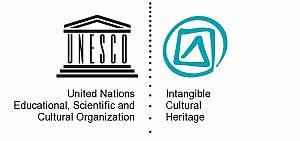
Ethics and Intangible Cultural Heritage
The Convention for the Safeguarding of the Intangible Cultural Heritage is a UNESCO Treaty adopted by the UNESCO General Conference on 17 October 2003 after 60 years of work in this domain. The Convention entered into force in 2006, after thirtieth instruments of ratification by UNESCO Member States.
Intangible cultural heritage (ICH) refers to the practices, representations, expressions, knowledge and know-how, transmitted from generation to generation within communities, created and transformed continuously by them, depending on the environment and their interaction with nature and history. Heritage, as it is transmitted from generation to generation. Cultural, as it provides to communities a sense of identity and continuity, as culture does. Intangible, as it lies essentially in the human spirit, is transmitted by imitation and immersion in a practice, and does not necessarily require a specific place or material objects. The Intangible Cultural Heritage exists only in the present. The expressions of the past that are no longer practised are part of cultural history, but are not the Intangible Cultural Heritage as defined in the Convention for the Safeguarding of the Intangible Cultural Heritage. The Intangible Cultural Heritage is what communities today recognize as part of their cultural heritage. Therefore, it is often called “living heritage”.
The Intangible Cultural Heritage adapts permanently to the present and constitutes cultural capital that can be a powerful driver for development. Food security, health, education, sustainable use of natural resources – the Intangible Cultural Heritage is a wealth of knowledge to be used in many aspects of life. Women hold a special place in the transmission of the intangible heritage and have knowledge that contributes to their empowerment and revenue generation. ICH is also vital for maintaining cultural diversity in the face of globalization. Understanding ICH contributes to intercultural dialogue, encourages mutual respect and ensures social cohesion. The importance of ICH is not the cultural manifestation itself; it lies in its significance to communities. Its value is both intangible and tangible, linked to the social and economic effects of the knowledge and skills transmitted through it.
The Convention is the first binding multilateral instrument of the international community intended to safeguard and raise the profile of this heritage. Its goal is to incite countries to care about and look after the ICH present on their territories.
At the national level, States Parties are asked to take the required measures to safeguard the ICH present on their territory: define and inventory ICH with the participation of the communities concerned; adopt policies and establish institutions to monitor and promote it; encourage research; and take other appropriate safeguarding measures, always with the full consent and participation of the communities concerned. Each State Party submits regular progress reports to the Committee.

